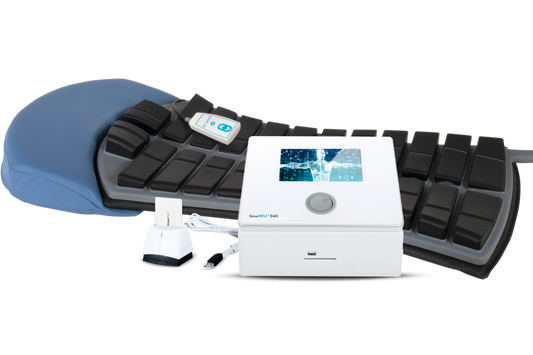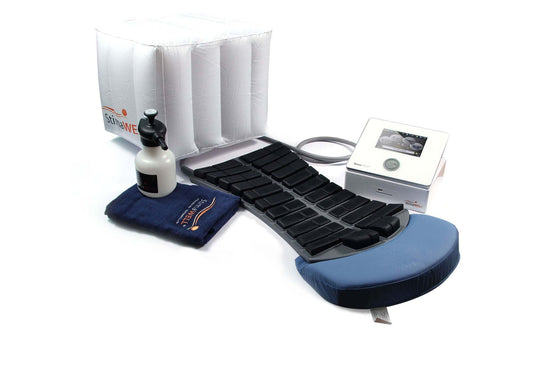
PEMF THERAPY FOR DIABETES
PEMF (Pulsed Electromagnetic Field) therapy has been gaining attention as a potential adjunctive treatment for managing diabetes and its various complications. This non-invasive therapy utilizes electromagnetic fields to stimulate cellular repair and improve bodily functions, offering a promising approach for individuals struggling with this chronic condition. Here’s how PEMF therapy can be beneficial for diabetes management and why investing in a PEMF mat could significantly enhance your health regimen.
Understanding Diabetes and Its Complications
Diabetes is a chronic disease characterized by high levels of sugar in the blood, which can lead to serious health problems if not managed properly. These complications include nerve damage, poor circulation, delayed wound healing, and increased risk of infections. Managing diabetes effectively requires a comprehensive approach that includes lifestyle changes, medication, and regular monitoring of blood sugar levels.
How PEMF Therapy Helps with Diabetes
Improvement of Circulation:
Diabetes often leads to poor circulation, particularly in the extremities, which can exacerbate health issues like neuropathy and slow wound healing. PEMF therapy helps to enhance blood flow, ensuring that oxygen and nutrients are efficiently delivered to all body tissues. Improved circulation can aid in the healing of diabetic ulcers and reduce the risk of infection.
Enhancement of Cellular Function:
At the cellular level, PEMF therapy stimulates the cells’ natural repair processes, which is crucial for individuals with diabetes who often suffer from cellular dysfunction due to prolonged high blood sugar levels. Enhanced cellular function can lead to better glucose metabolism and overall improved cellular health.
Reduction of Inflammation:
Chronic inflammation is a common issue in diabetes and can contribute to the development of insulin resistance. PEMF therapy has anti-inflammatory properties that help reduce inflammation, potentially improving insulin sensitivity and aiding in better blood sugar control.
Nerve Stimulation and Pain Relief:
Diabetic neuropathy, a painful condition resulting from nerve damage due to high blood sugar levels, can be debilitating. PEMF therapy can alleviate pain by stimulating nerve repair and reducing inflammation, offering relief from neuropathic pain without the side effects associated with traditional pain medications.
PEMF MAT BENEFITS FOR DIABETES
Our PEMF mat is specifically designed to maximize the therapeutic benefits of PEMF therapy for individuals managing diabetes:
Versatile Treatment Coverage:
The mat's large surface area allows for comprehensive coverage, targeting key areas affected by diabetic complications, such as the legs and feet, where circulation issues and neuropathy are common.
Adjustable Settings:
With various intensity levels and frequency options, our PEMF mat can be tailored to meet the specific needs of each individual, allowing for personalized therapy sessions that address different aspects of diabetic health.
Ease of Use:
Designed for convenience, our PEMF mat is easy to use in the comfort of your own home, enabling regular, consistent treatment sessions without the need for frequent trips to medical facilities.
Safety and Comfort:
Constructed with safety and comfort in mind, our mat ensures a pleasant and secure experience for all users, making it an ideal choice for long-term therapy.
CONCLUSION
Incorporating a PEMF mat into your diabetes management plan offers a unique opportunity to enhance your overall health and tackle the complications associated with diabetes. By improving circulation, enhancing cellular function, reducing inflammation, and providing pain relief.
PEMF therapy can significantly improve your quality of life. Take control of your diabetes management with the innovative approach of PEMF therapy. Enhance your body's natural healing capabilities and experience meaningful improvements in your health.
RECOMMENDED PROGRAMS
If you already own one of our PEMF Mats we recommend these programs for Diabetes:
-
SEDONA PRO/PRO PLUS PEMF MAT
Relax: 1, 2, 3, 4, 5, 7
Wellness: 1, 5
Sport: 1, 2, 3, 4
-
SEDONA ELITE PEMF MAT
Wellness: 1, 2, 3
Longevity: 1, 2
STUDIES
-
Read Study
PubMed - Assessing the Effects of Pulsed Electromagnetic Therapy on Painful Diabetic Distal Symmetric Peripheral Neuropathy: A Double-Blind Randomized Controlled Trial.
-
Read Study
PubMed - Evaluation of the efficacy of pulsed electromagnetic field in the management of patients with diabetic polyneuropathy.
-
Read Study
Clinical Trials - A Trial for the Use of a Pulsed Electromagnetic Field Device to Assist Management of Type 2 Diabetes.
SEDONA WELLNESS PRODUCTS
-
SEDONA PEMF FACEMASK
Vendor:Sedona WellnessRegular price $390.00 USDRegular priceUnit price / per -
TIMMYZZZ PEMF PILLOW
Vendor:Sedona WellnessRegular price $390.00 USDRegular priceUnit price / per -
SEDONA PRO PEMF MAT
Vendor:Sedona WellnessRegular price From $5,900.00 USDRegular priceUnit price / per -
SEDONA PRO PLUS PEMF MAT
Vendor:Sedona WellnessRegular price From $6,900.00 USDRegular priceUnit price / per -
SEDONA ELITE PEMF MAT
Vendor:Sedona WellnessRegular price From $7,900.00 USDRegular priceUnit price / per -
SEDONA PEMF CHAIR
Vendor:Sedona WellnessRegular price From $15,900.00 USDRegular priceUnit price / per -
STIMAWELL EMS BACK MAT
Vendor:Sedona WellnessRegular price $16,900.00 USDRegular priceUnit price / per -
LONGEVITY LOUNGER PEMF BED
Vendor:Sedona WellnessRegular price From $21,900.00 USDRegular priceUnit price / per

















